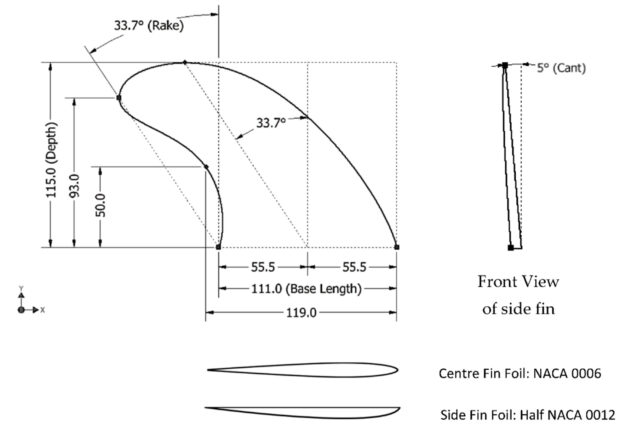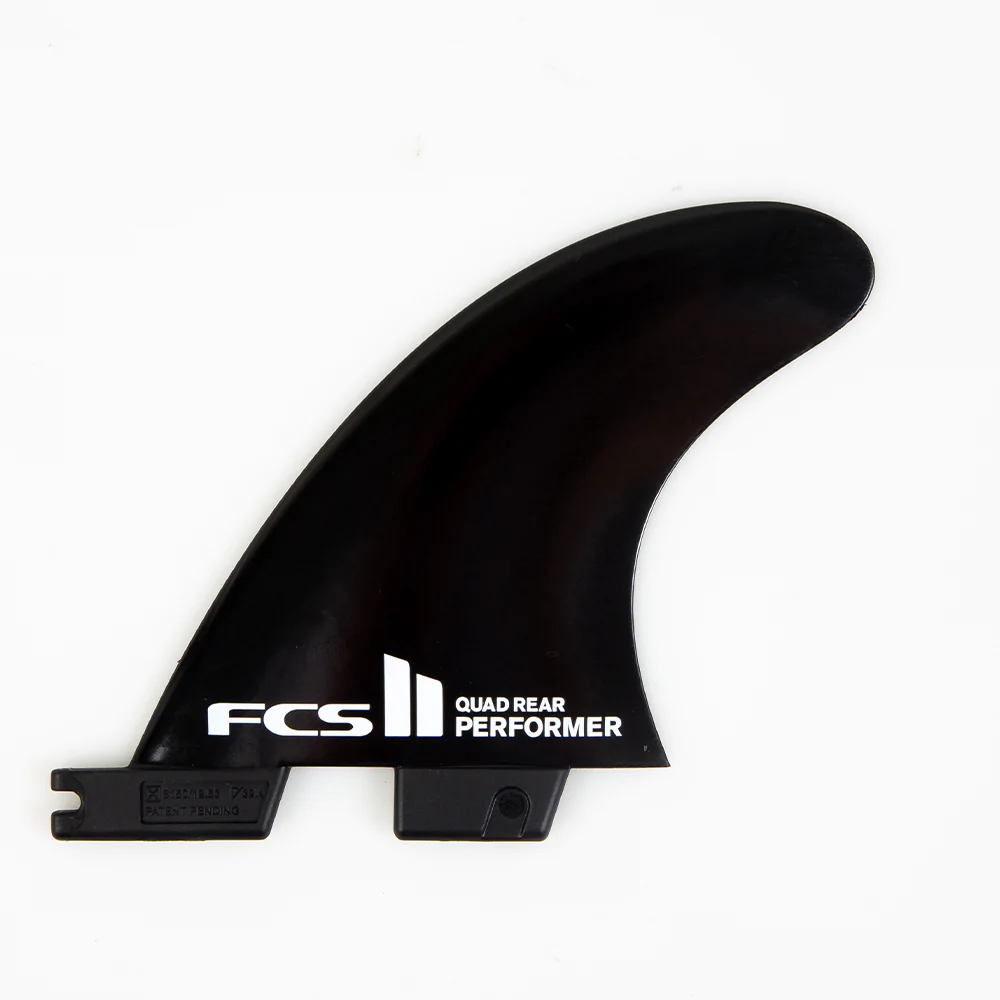Surfboard Fins: 2024 Guide to Types, Materials & Sizes
Choosing surfboard fins is probably one of the most misunderstood yet important aspects of surfing.
Like choosing a surfboard, there are an infinite number of variations and experimentation factors that will allow you to create more speed, drive, hold, carve and flow – unlikely at the same time – with each different set of fins you test.
Any experienced surfer will tell you that the simple act of changing the fins has changed a board that they absolutely hated to one that became a favorite. Or that changing the fins for a different kind of wave allowed them to surf better and more appropriately to what the wave called for.
Thus, it is important to understand that not all fins are created equal and that a little insight into fin types, anatomy, and design can go a long way in progressing your surfing.
Importance of fins in surfing
In case you were wondering how fins can influence your surfing, here are a few ways:
- Provide hold and prevent your board from sliding out
- Provide drive and acceleration
- Allow for quick, short, or extended turns
- Allow for quick pivoting and maneuverability

Daniel Lofaso
SwellSpy Founder
Types of surfboard fin setups
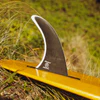
Single fins
The single fin is aptly named as it comprises one, often long fin. They are most commonly used on longboards, but can also be seen on shortboards.
Ideal conditions: Single fins are generally suited for small to medium waves.
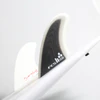
Twin fins
Twin fins are a popular choice for speed generation and are a throwback to the 1970s when they were first introduced. MR, or 4x World Champion Mark Richards, used them famously as a step up from the single fins other pros were riding. Because the setup lacks the center fin, it has less drag and thus is known for creating a lot of speed.
Ideal conditions: Twin fins are suited for small, medium, and overhead surf although today’s modern twin fins are being used in much larger waves by experienced surfers.
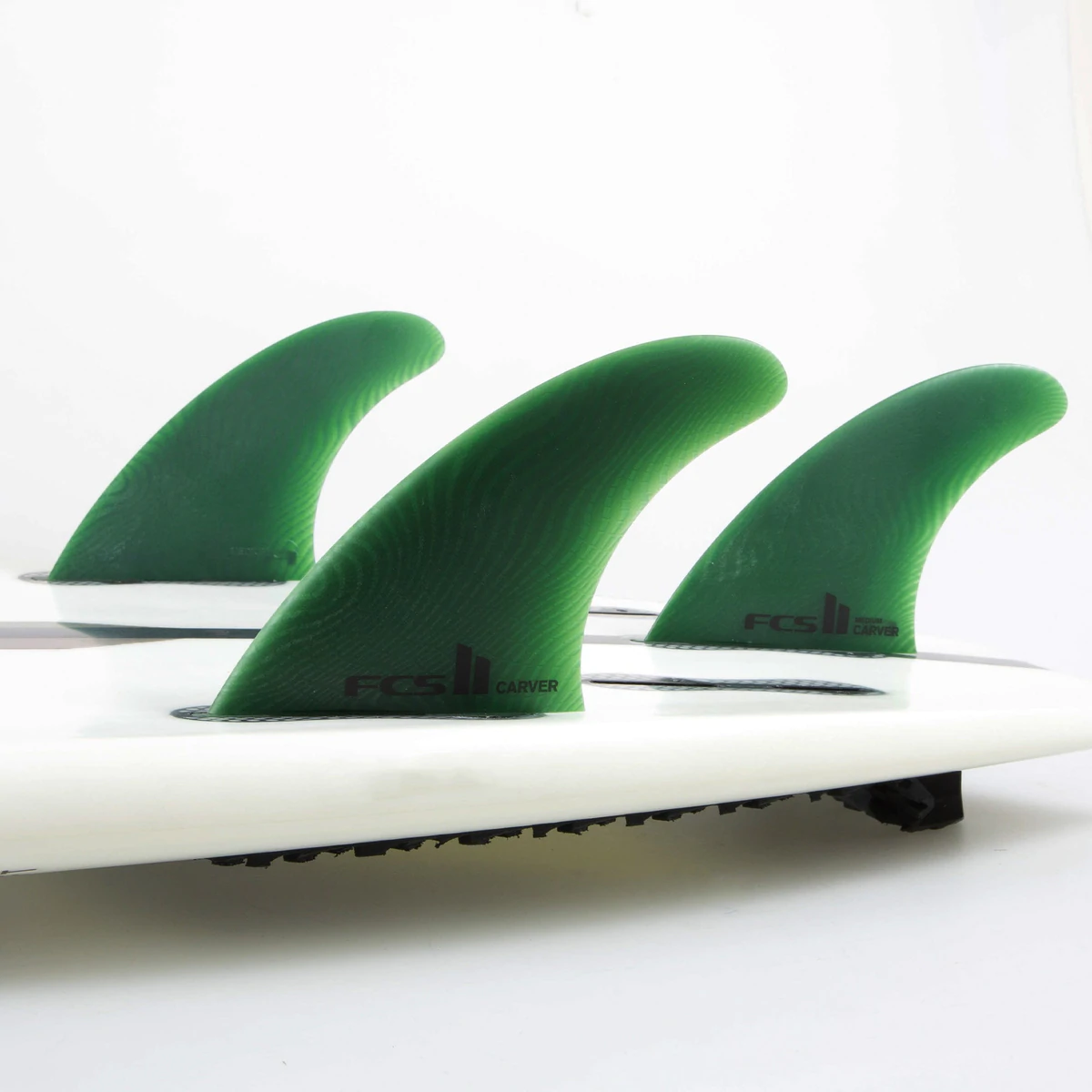
Thruster fins
Thruster fins refer to the three-fin setup that most surfers are accustomed to today. Just like MR innovated on the single fin to great success, Simon Anderson was regarded as the professional surfer who evolved to three equally sized fins just a decade later.
Thrusters are known for their stability, allowing surfers to pivot off the center fin while benefiting from the hold of the other two side fins. Most pros today ride thrusters.
Ideal conditions: Thrusters are used in every type of wave and condition possible.
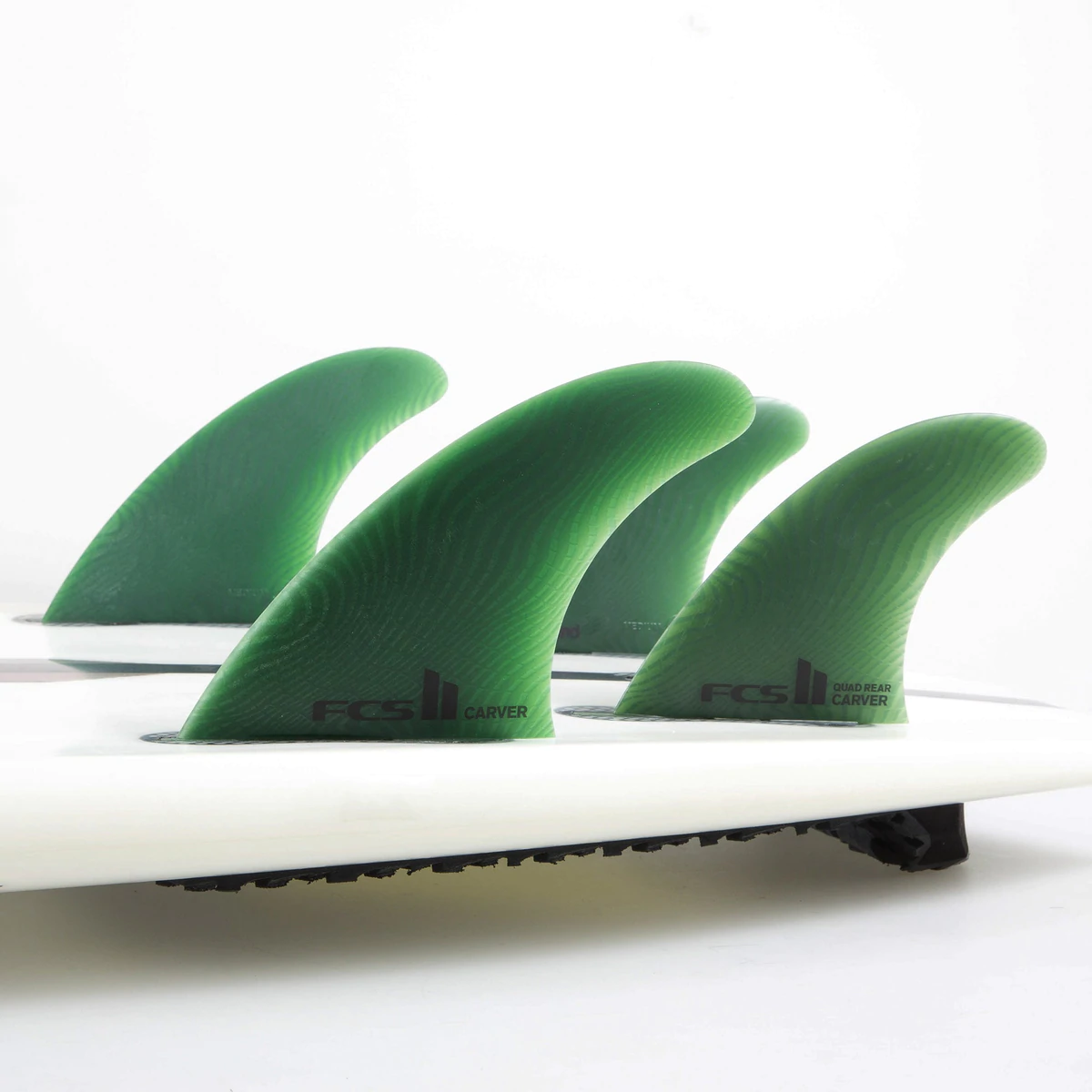
Quad fins
Quad fins are similar to twin fins with the fins on opposing sides, with the exception that there are four fins rather than two. Quads are a more modern fin setup that provides a bit of the benefit of the twin fin in speed and pivoting from the thruster from the hold provided from the additional fins.
Ideal conditions: Quad fin setups are popular in waves of all types, particularly for hollow, barreling waves.
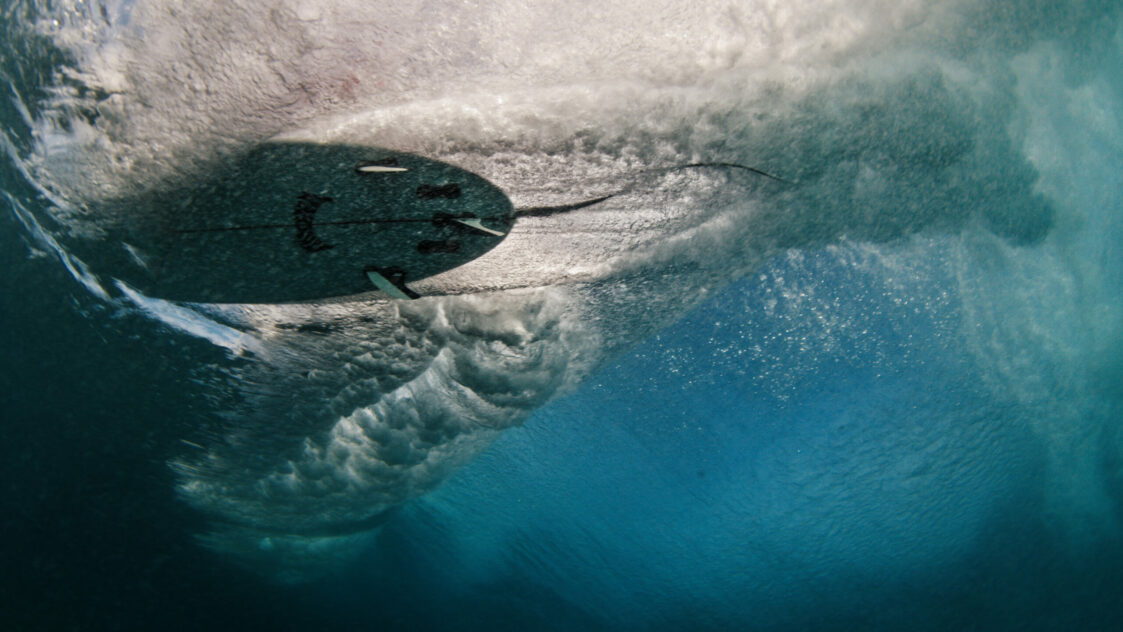
Fin Size
The size of the fin affects your performance in the water. A larger fin provides more hold and control in bigger surf, while a smaller fin is more forgiving and loose but sacrifices drive and control.
Fin Base
The base of the fin is the part that attaches to the board, and a longer or wider base helps with drive and results in drawn-out turns.
Fin Depth
Fin depth refers to how far the fin extends from the bottom of the board, and a deeper fin offers more hold and stability.
Fin Rake
Fin rake refers to the arc of the fin and how far back it tilts, with a larger degree of rake resulting in more drawn-out turns.
Fin Foil
Fin foil is an aerodynamic shape that generates lift, and the cant of a fin refers to the outward angle in relation to the bottom of the board.
Fin Cant
A zero cant fin is fast in a straight line but not as responsive in turns, while a larger cant provides more responsiveness and drive when the board is tilted on the rail.
Materials used for surfboard fins
Fins are typically made of materials such as fiberglass, epoxy, carbon fiber, plastic, or a combination of these materials. Most of today’s fins are attached to the board using a fin box, which is a slot or channel on the underside of the board that allows the fin to be removed or replaced. Fins used to be glassed right on to boards permanently, but this is rare in most boards today.
The materials used for fins are important because it translates to the flex of the fin, and its ability to react to the pressure the rider puts on them. Some of these materials are also more ecofriendly than others, something the surfing industry as a whole is known for.
Fiberglass
Fiberglass fins have been around for ages and are constructed of fiberglass resin. Often referred to as just “glass,” these fins are stiff, and may be suited to heavier or stronger surfers who do powerful turns.
Carbon fiber
Carbon fiber fins are known for their light weight and snappy responsiveness. They are generally blended with other materials like epoxy, and because of the various constructions associated with carbon fins they can be both rigid or flexible.
Composites
Many of today’s fin manufacturers utilize composites that blend different materials together to provide lightweight, flexible, or strength properties. For example, FCS has fins that combine molded resin along with a polyurethane foam interior.
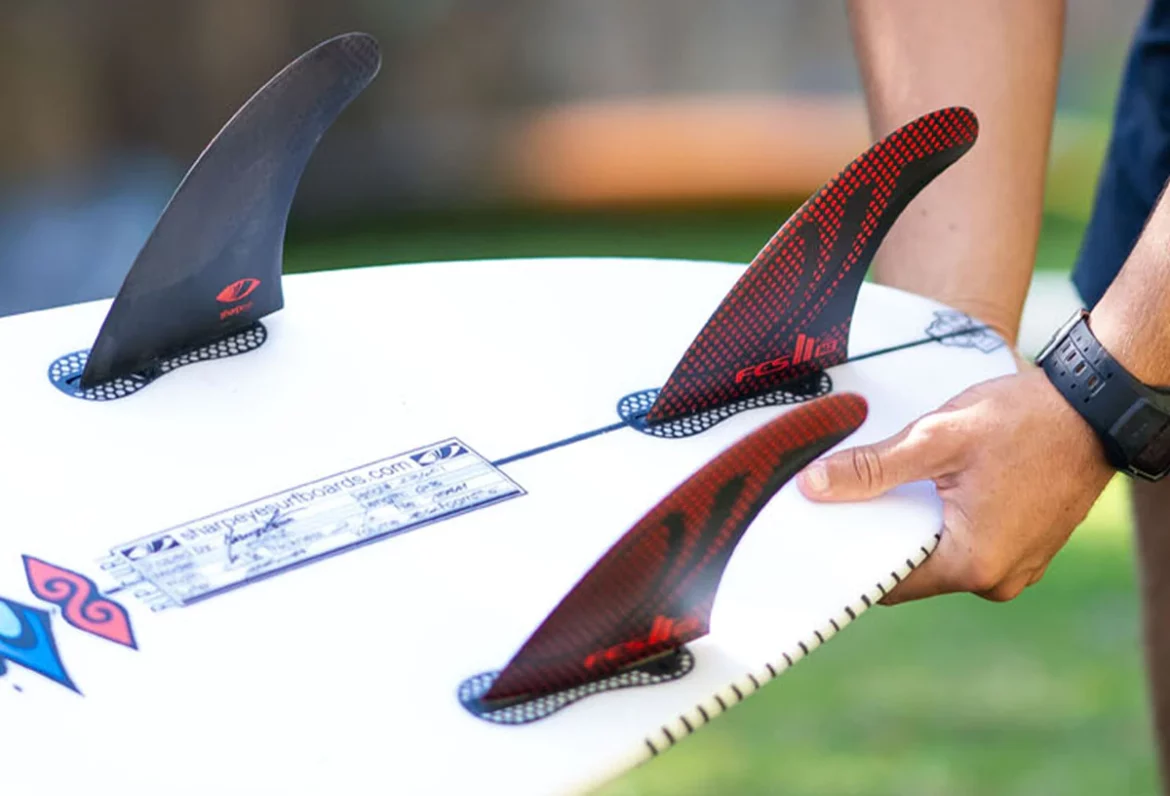
Most Popular Surfboard Fin Manufacturers
Without a doubt, there are two reigning kings in the fin manufacturing industry: FCS and Futures. About 95% of the boards you see on the rack online or at your local surf shop will have either FCS or Futures fin boxes in them.
So while there are not a ton of options in terms of fin brands, there are a ton of options for fins from these two competitors. And if you are shopping for fins for either fin system, a good reference for the fins you might be interested in are demonstrated clearly by the brands. This info is referenced below.


FCS
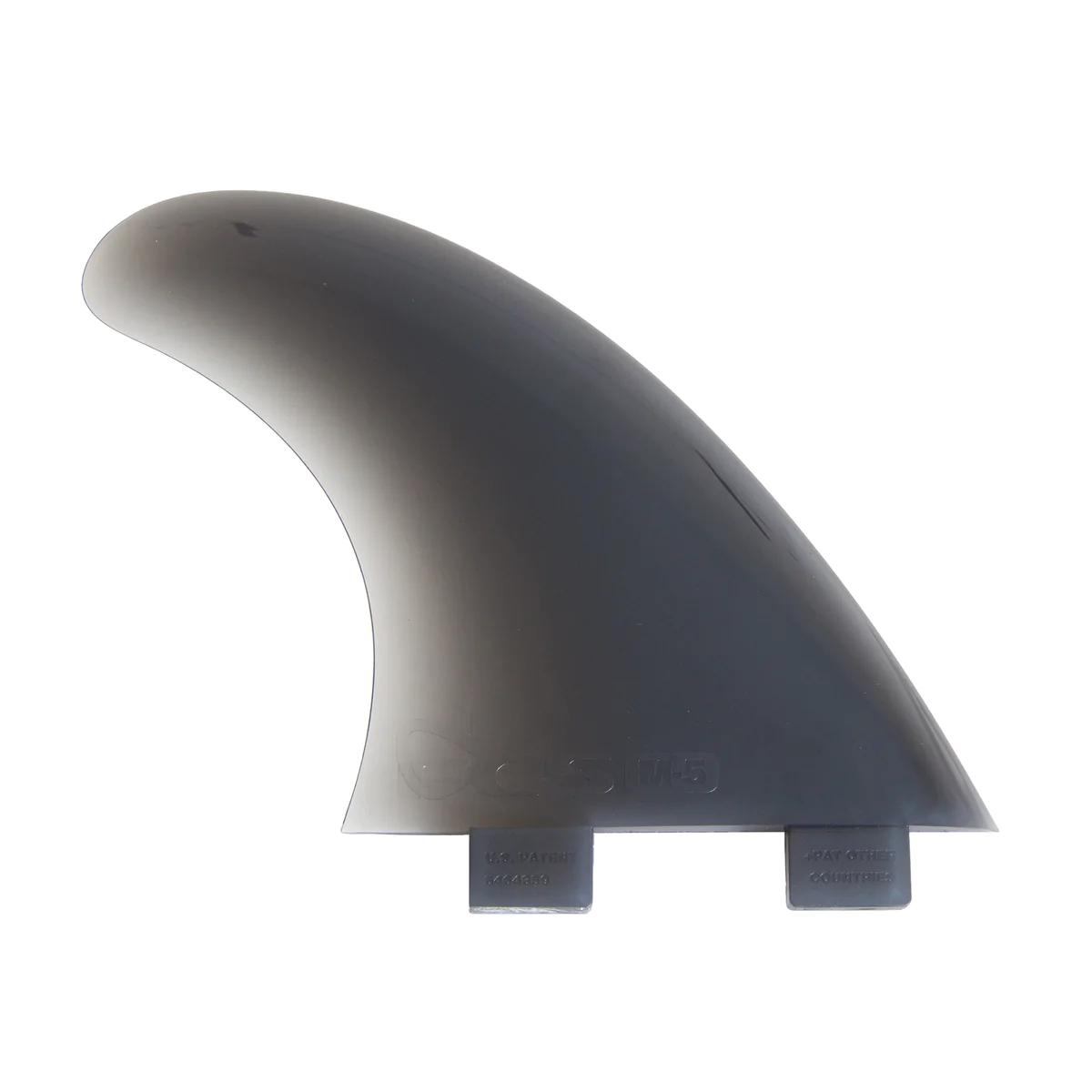
Softflex:
These fins are precision molded using flexible urethane, making them perfect for beginners as they provide the most flex of any FCS fins.
Glass Flex:
These fins are precision molded from engineering grade polymer and are also suitable for beginners. They offer good flex, allowing for smooth turns and maintaining speed.
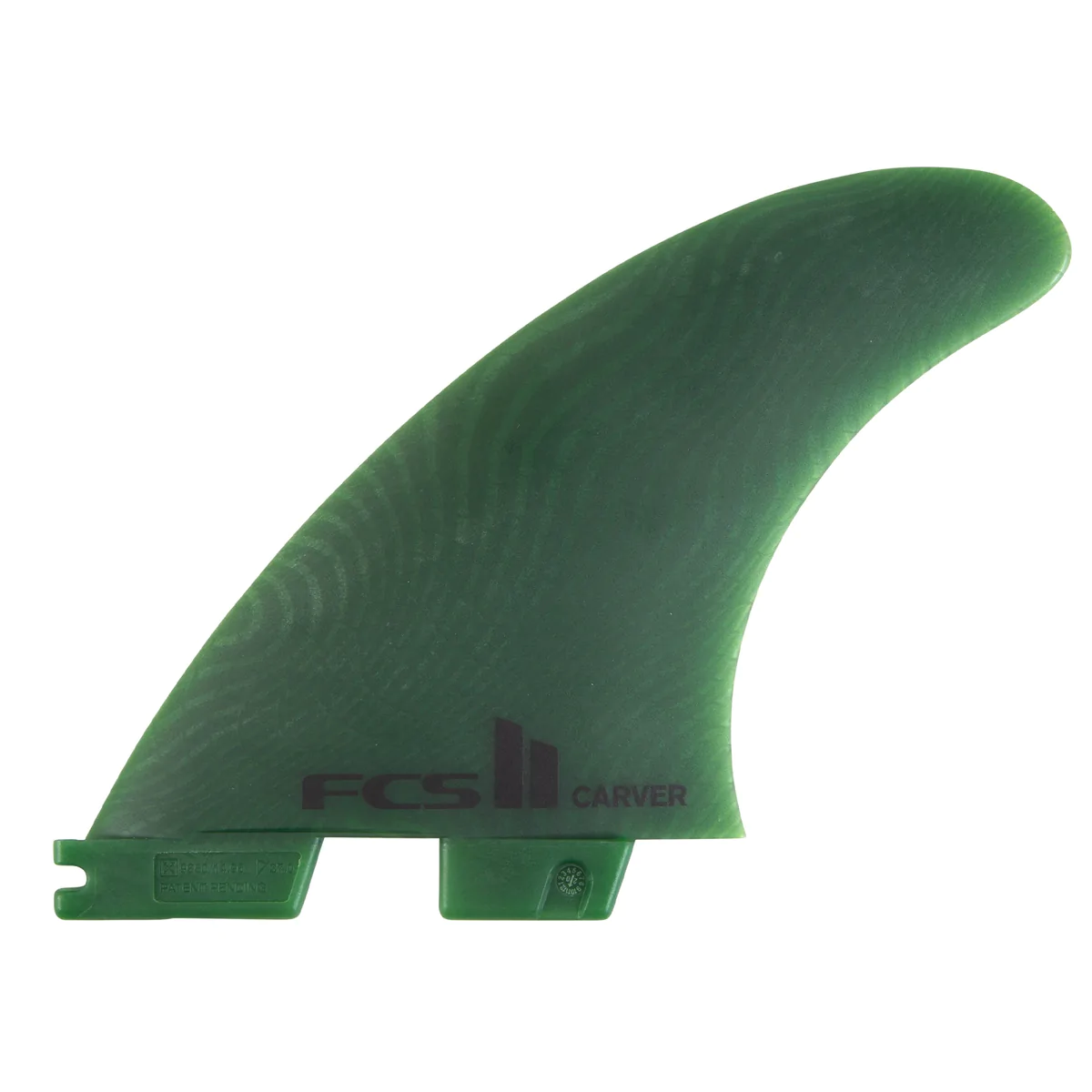
Neo Glass:
Constructed with a high fiberglass content (50%) and marine grade polymer, these fins offer less flex than Soft Flex and Glass Flex fins, resulting in a more immediate response during turns.
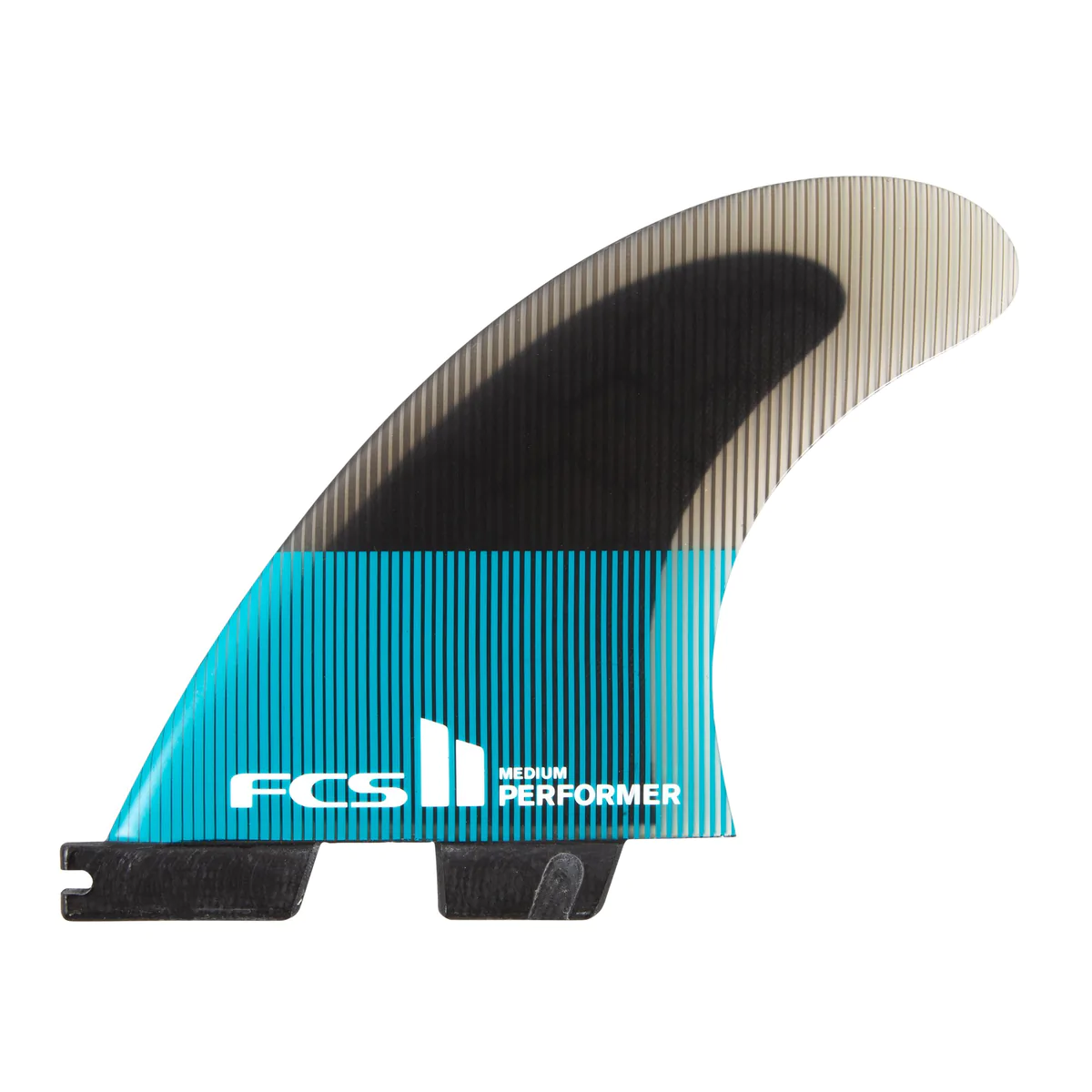
Performance Core:
Made with a slightly higher fiberglass content (55%) and using fiberglass resin and a hex core, these fins are lightweight while still providing good flex and an immediate response during turns.
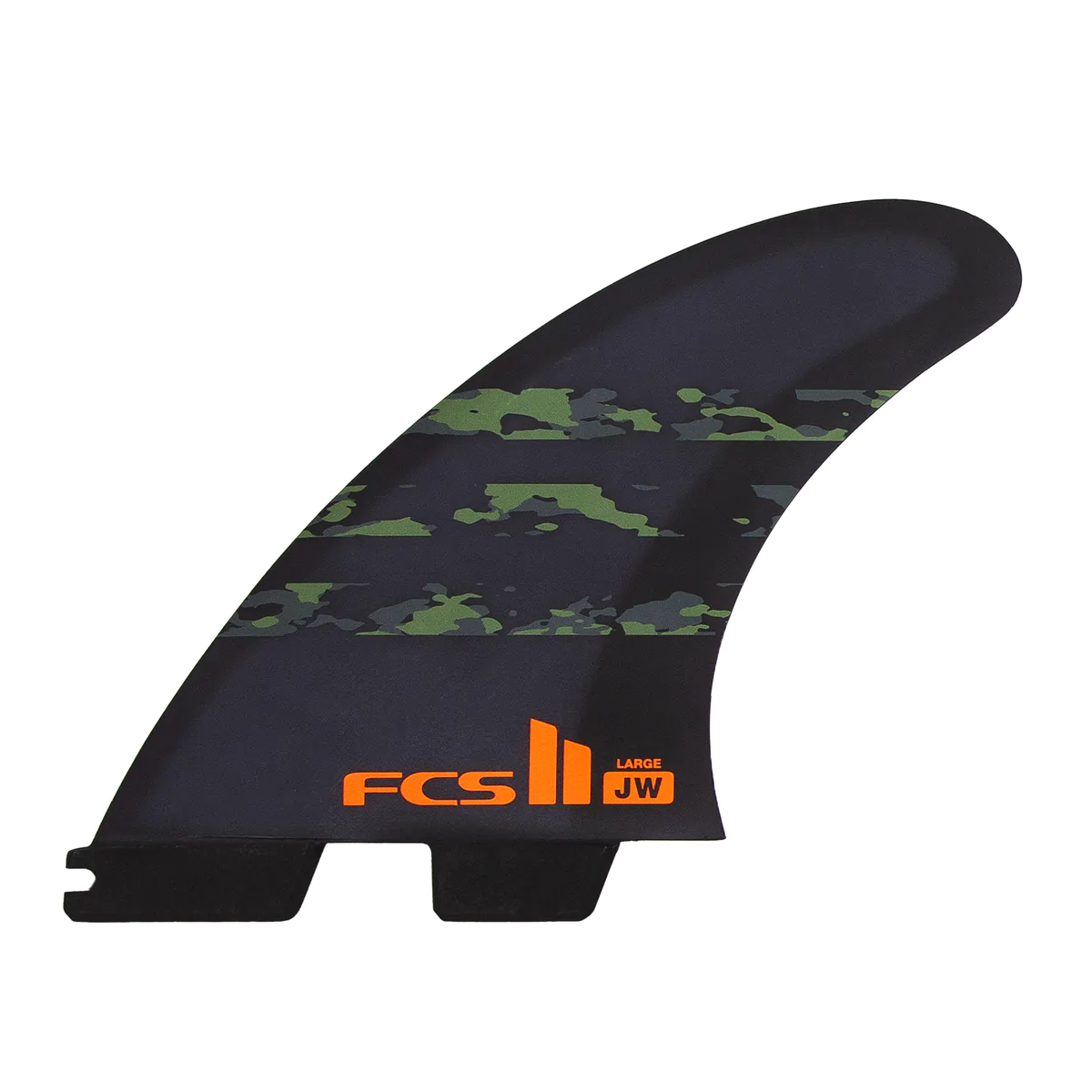
Performance Core + Aircore:
AirCore Technology fins use a polyurethane foam core that mimics the shape of the fin's foil. This technology reduces the amount of fiberglass needed in the manufacturing process, making the fins lighter and allowing for more control over their flexibility.
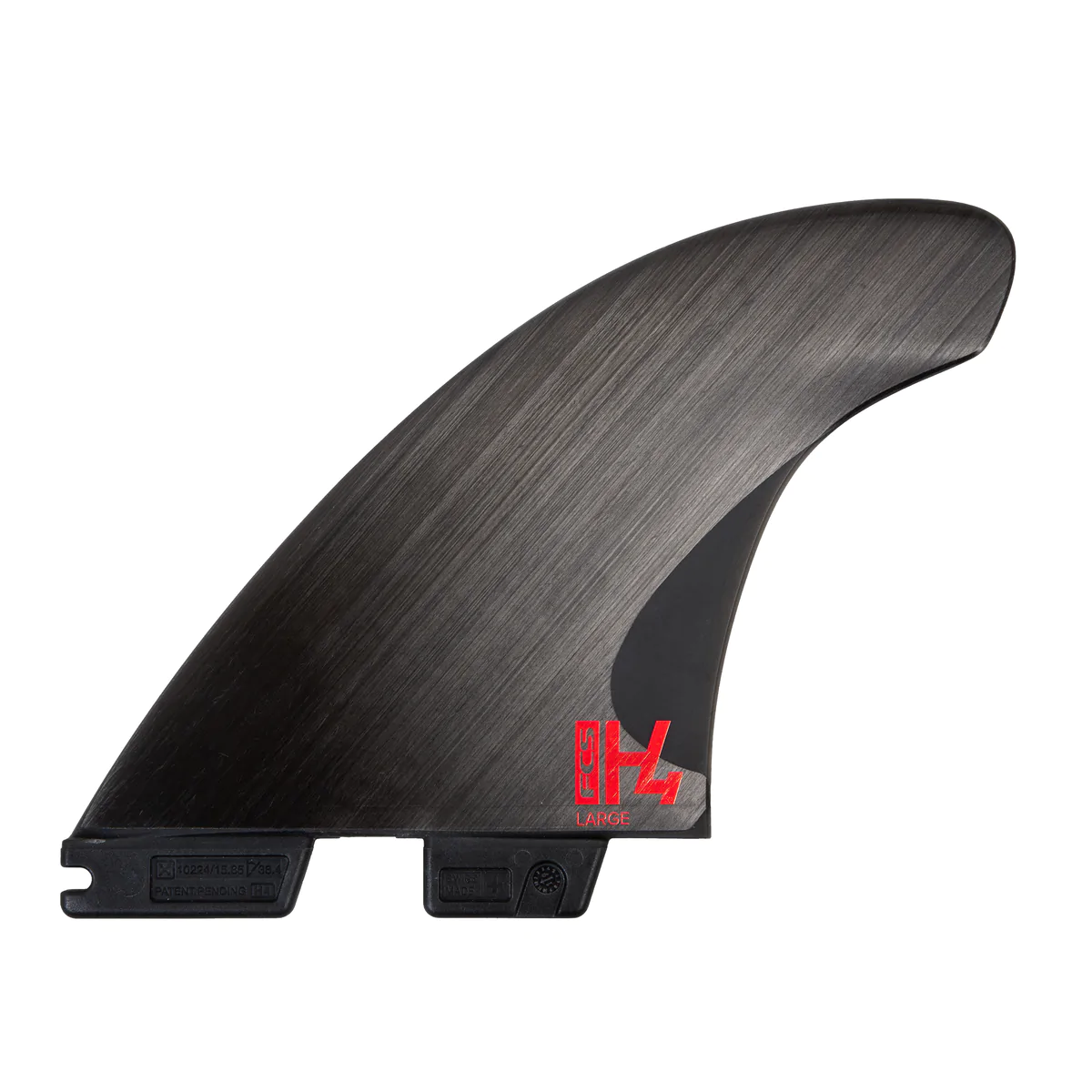
Performance Core Carbon:
Similar to PC fins, these fins have a slightly higher fiberglass content (60%) and also feature carbon strips in certain areas to create specific flex patterns. These fins are favored by powerful surfers.
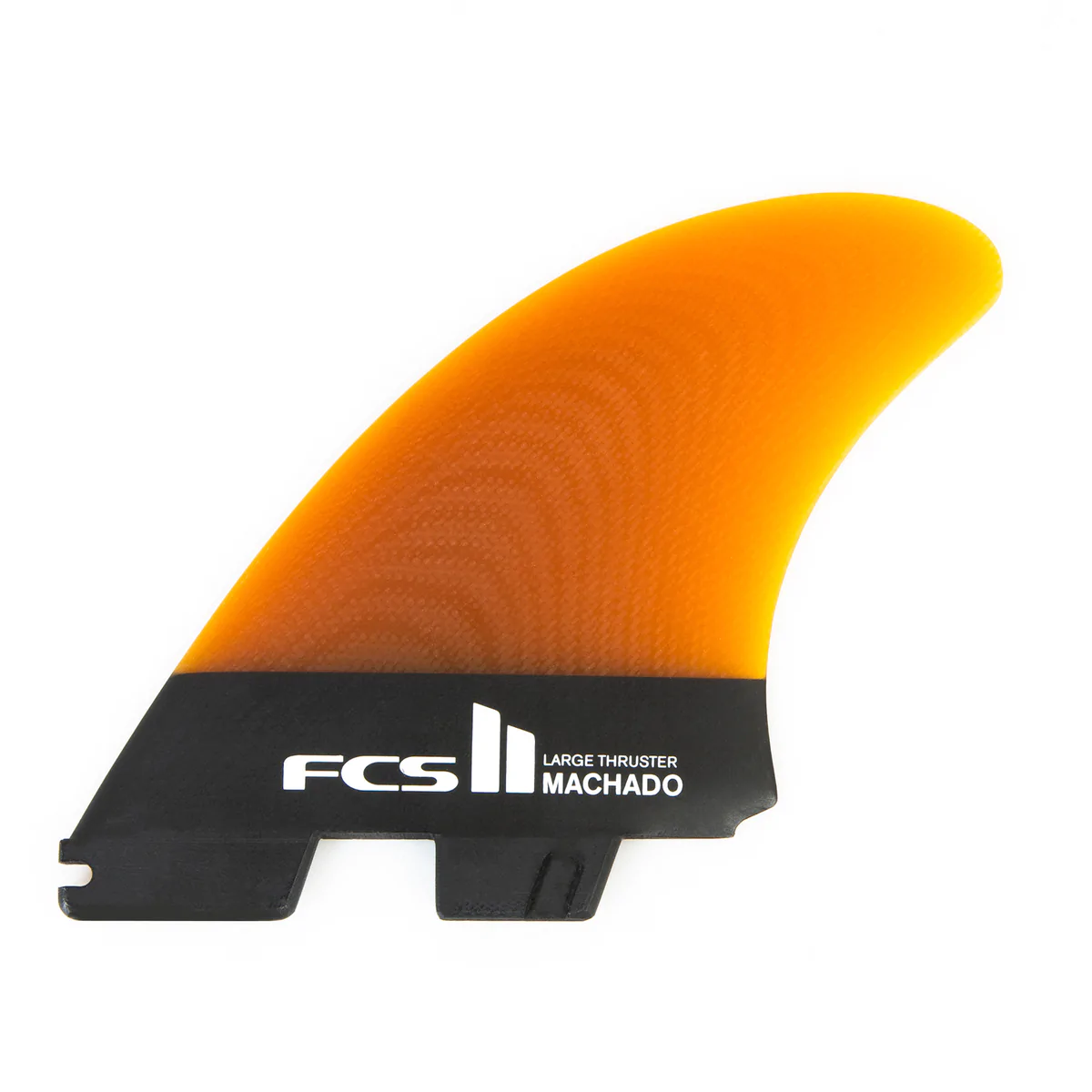
Performance Glass:
Made by machine cutting solid fiberglass, these fins offer a stiff flex pattern and an immediate response during turns, making them popular among professional surfers.
Futures
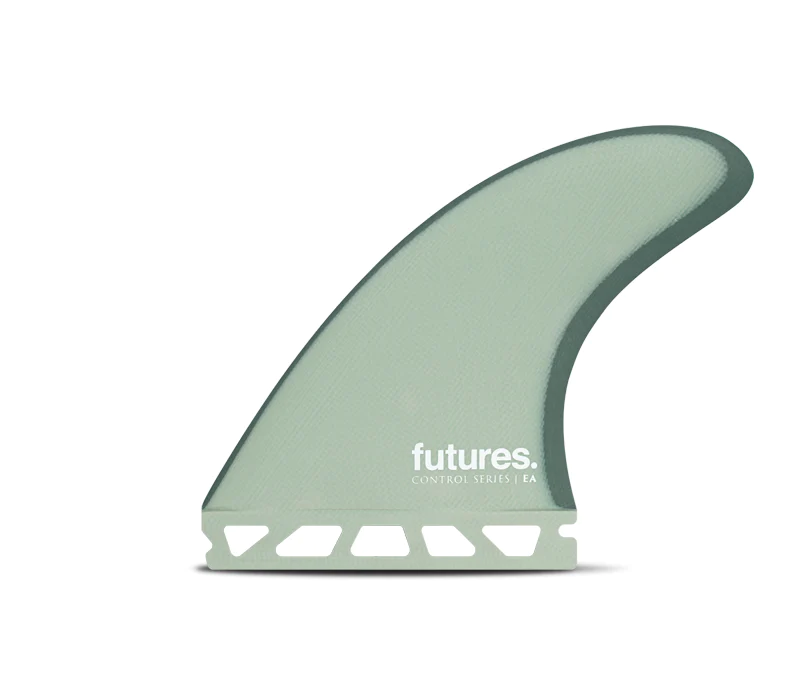
Control:
Made with a combination of fiberglass and carbon fiber, these fins offer strength, reduced weight, and increased responsiveness. They are the stiffest fins in the Futures line-up.
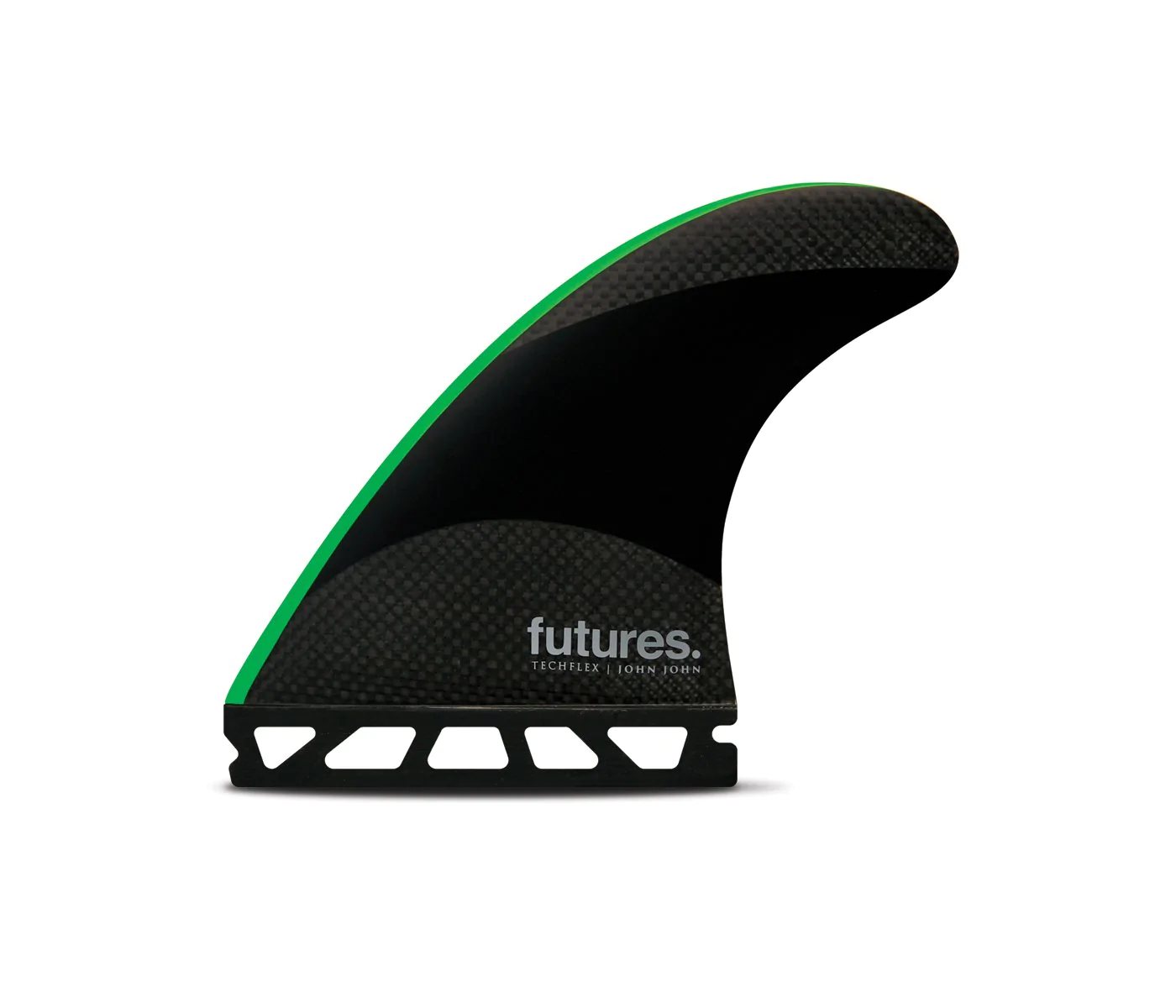
Techflex:
Designed for surfing in big, powerful waves, these fins feature a honeycomb core which significantly reduces weight, while carbon in the base and tip keep the fin stiff, providing increased control in big surf. They are slightly more flexible than the Control series.
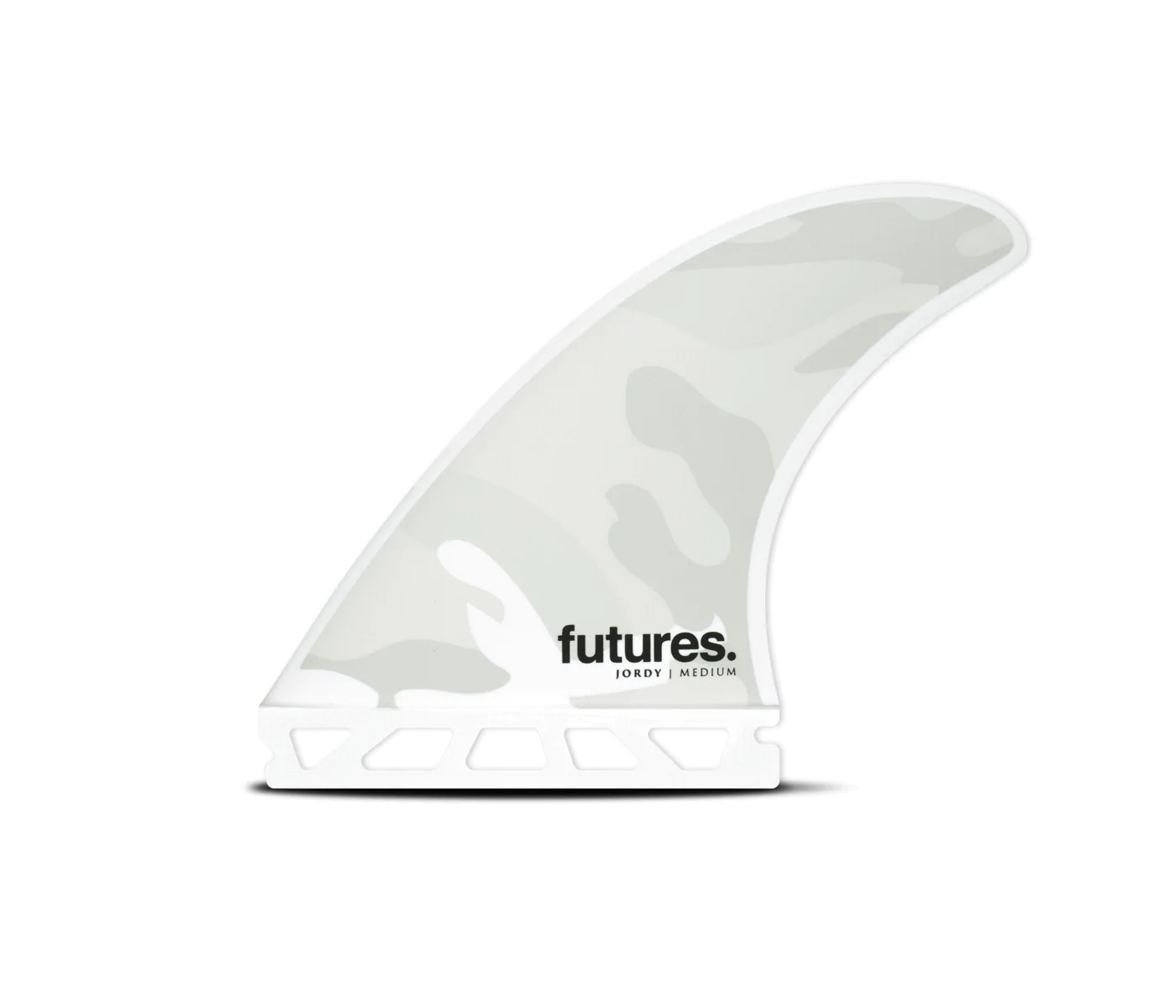
Honeycomb:
These fins offer a balance of flex and control, making them a good all-around option for surfers who encounter a variety of wave conditions. Made with a lightweight hexagonal core, they are more flexible than the Techflex and Control series.
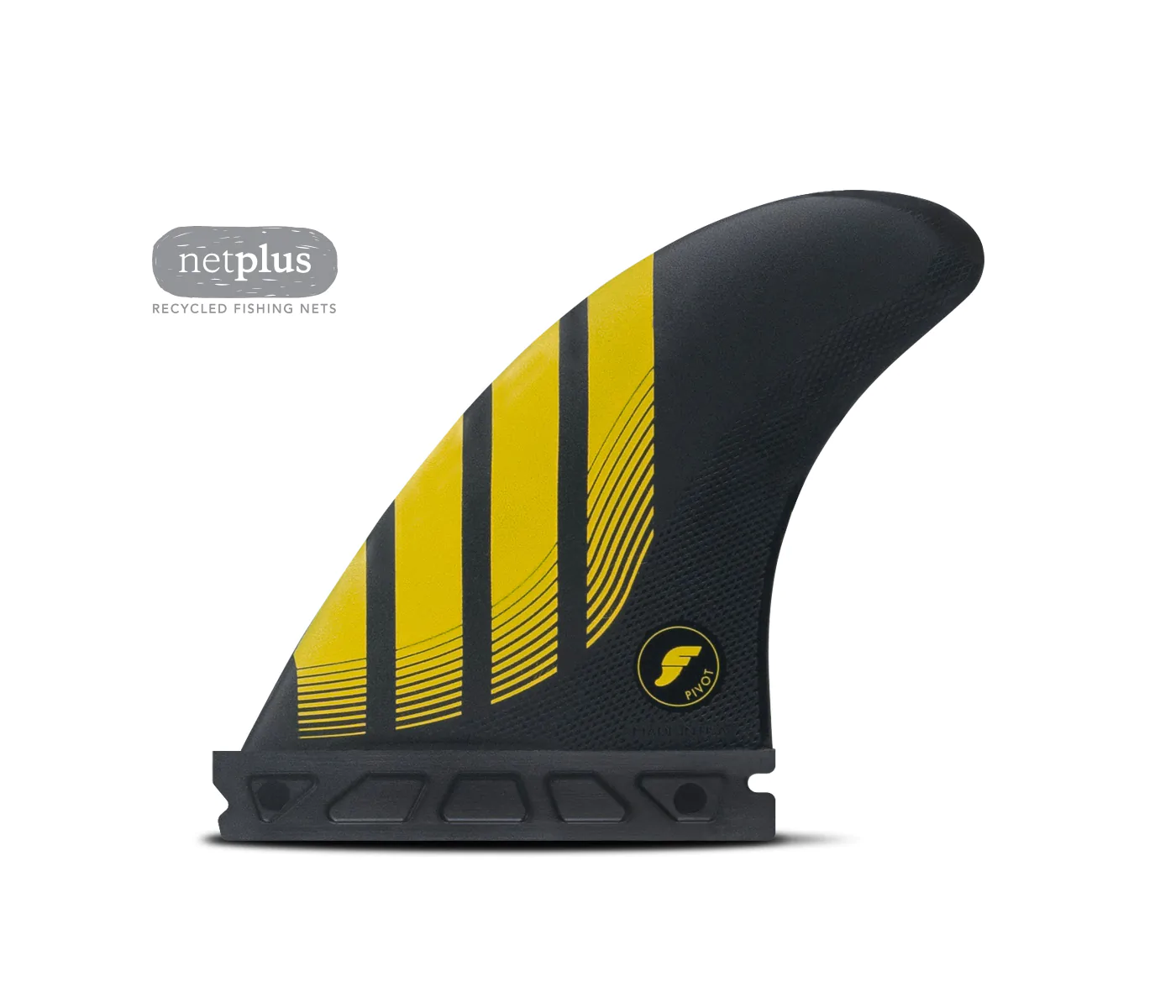
Alpha:
These fins offer the same flex range as the Honeycomb series and are made with a new carbon fiber-infused material that is lighter but just as strong. They feature added thickness at the base of the fin and reduced thickness at the tip, providing extra drive.

Generation:
These fins are made with a combination of honeycomb, unidirectional, and bi-directional fiberglass, and feature a V2 foil for speed and drive. Bi-directional carbon fiber at the base creates stiffness and rigidity, while unidirectional carbon fiber strips running from the front half of the base vertically up the fin secures the leading edge of the fin and concentrates flex to the tip. They are constructed with epoxy resin for its reduced weight and strength.
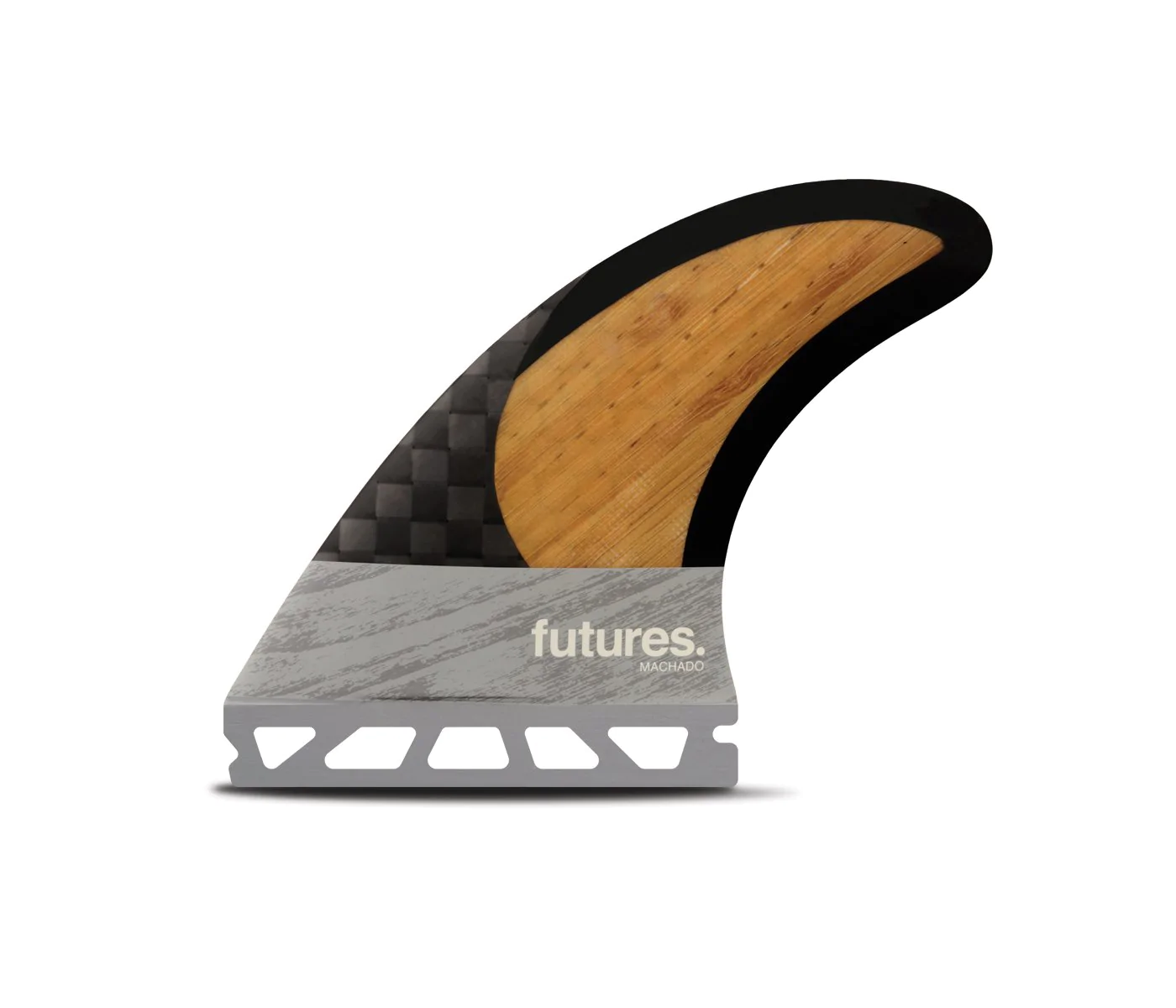
Blackstix:
Designed to generate speed, these fins feature strips of carbon fiber running from the base through to the tip that control the way the fin flexes. Bi-directional carbon fiber running in an arc from the base of the fin towards the leading edge stiffens the base and adds drive, while leaving the tip free to flex. They are constructed with epoxy resin for its reduced weight and resilience, resulting in a fin that has plenty of drive and becomes progressively more flexible towards the tip.
Fin placement and setup
Surfing relies heavily on fin placement and setup, as different fin configurations can significantly alter the performance and handling characteristics of a surfboard. While most surfers don’t have a lot to say when it comes to fin placement and setup on their boards – the shapers handle this for you – it is an important factor to know, especially if you order custom surfboards and want to experiment with different configurations.
To adjust the looseness or drive or a surfboard as related to fin setup, you can play around with what is called the fin cluster. For example, if you move your cluster slightly up and the fins closer together, you might experience a looser board that is translated into your turns. On the other hand, if you are going for more drive, you may experiment with moving your cluster closer to the tail, with the fins spread out a bit more.
Again, this is an area where you and your shaper can work together to go after particular “feelings.”
This guide relates to the most common fin setups of a thruster.
Center fin
The center, or rear fin is often placed 3” to 3 ½“ from the back of the surfboard.
Side fins
The side fins in a thruster are often 11” to 11 ½“ from the back of the surfboard, and about 1 ¼“ from the rail.
Fin angles: cart and toe
Cart
Cart is the angle in which fins are placed away from the stringer. Adjusting the cart will make the board feel stiffer and is often found in boards that are suited for bigger waves.
Toe
Toe is the angle in which fins are placed towards the stringer. Adjusting the toe can result in a looser-feeling surfboard.
Fin box types
The fin box is the mounting system in which your fins are attached. The large majority of fin systems, and therefore fin boxes, are reserved to either FCS or Futures.
FCS fin boxes feature a no-screw technology (called FCS II) that provides an ease-of-use over Futures. Futures fins require an allen key to secure the fin into place (as do older model FCS).
When you go to a surf shop or order a board online, you may be able to choose the fin box in which you want placed in your board. If you are buying a board off the shelf, it will already have the fin box in place. This is important to recognize in the event that you prefer one fin system over the other, or if you only have a set of fins from one of these brands.
In short, fin systems are not universal and a FCS fin will not fit in a Futures fin box and vice-versa.
Choosing the right fins for your surfboard
There are generally four factors you need to consider when choosing the right fins for your surfboard. These are:
- The fin system you use - FCS or Futures are the most common options.
- The appropriate fin size for your weight - Fin manufacturers will provide fin size recommendations on their websites based on weight.
- Thruster or quad setup - Whether you need a traditional three-fin setup or a four fin setup.
- Fin material - Selecting a fin from the composite, fiberglass, or carbon families or some blend that influences the waves you’ll be surfing most.
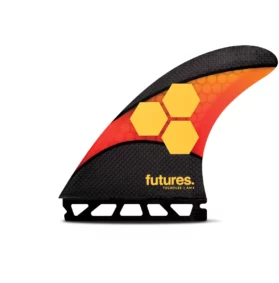
Maintenance and care of fins
Surfboard fins have increased in price over the last few years. While they are not generally something that wears out as quickly as a surfboard, keeping them in good condition will increase your investment. Here are some simple tips to sustain their longevity.
Cleaning fins after use
Like a surfboard, it is recommended to rinse your fins down with fresh water to clean off the salt water. Salt water can be corrosive, so a quick rinse can help prevent this.
Storing fins properly
To prevent nicks and damage to your fins, it is recommended to place them back into the packaging they came in, or some other fin case that protects your fins during transit.
Wrap Up
Fin science has historically been confusing to surfers. With some insight into fin anatomy, the fin constructions and types available to you, and understanding how that factors into the waves you are surfing, will help you get more out of every session.
Surf Fin FAQ
Definition of a surfboard fin
A surfboard fin is a thin, pointed structure that protrudes from the bottom of a surfboard and is used to stabilize the board and improve its maneuverability while surfing.
What are better, FCS or Futures fins?
Surfboard fin brands are subjective and there is no better option. FCS is known for the no-tool fin system, FCS II, while Futures require an allen key to secure the fins. Some independent research has shown that Futures are the stronger of the two in terms of blown fin boxes, but at the end of the day, it comes down to personal preference.
What’s better, big or small fins?
Bigger fins are associated with providing more drive and speed while small fins are associated with allowing more high performance surfing. Some pro surfers actually use fins contrary to what you might expect in terms of wave height. As shaper Jon Pyzel said, “you are going to want bigger fins in smaller surf and smaller fins in bigger surf. Counterintuitive, no? But listen. If you imagine fins as wings on an airplane you get a good idea of their effectiveness. A fighter plane (think gun, big waves) going super fast only needs small wings because the speed is creating a lot of lift. A larger, slower plane (grovel board, slow waves) needs big wings to help keep it up in the air.”

